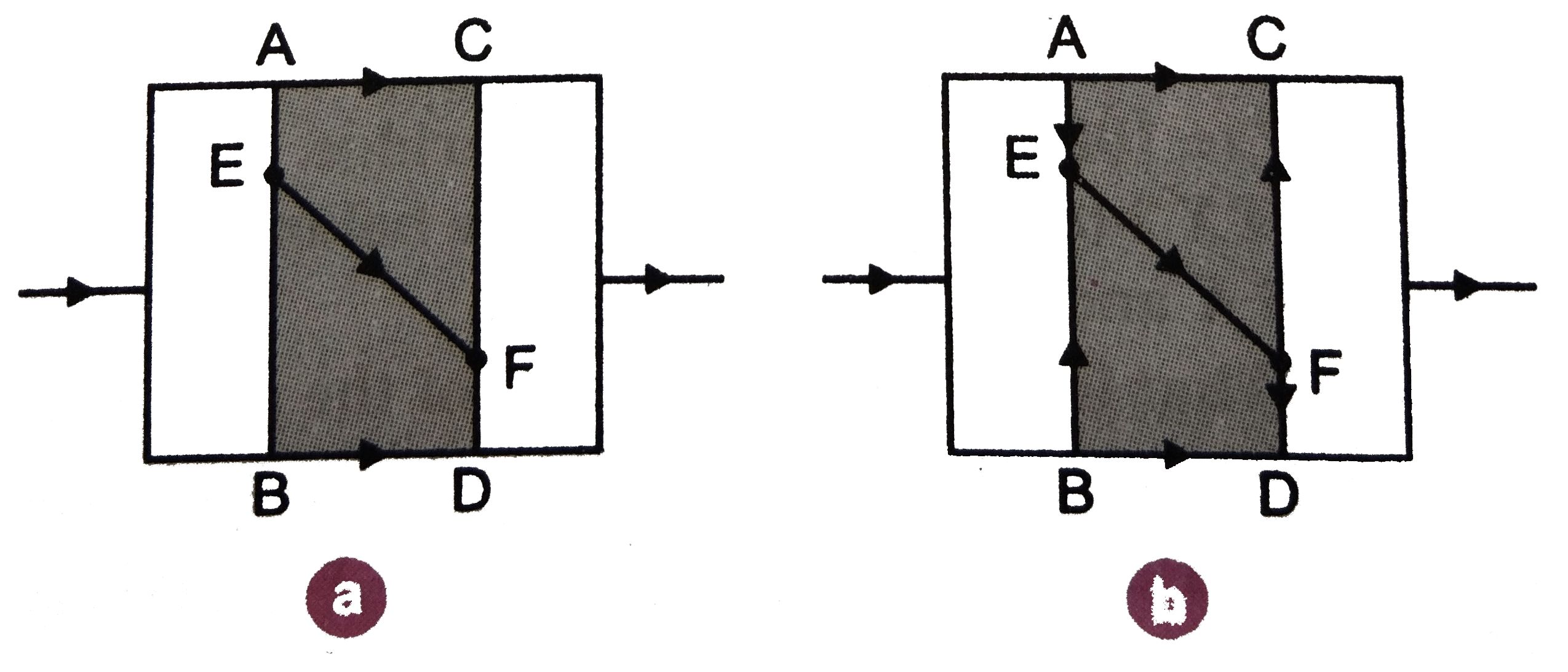Two conductors when connected by a wire, charge flows if they have
different charges
different potenials
different capacities
different charge densities
The correct Answer is:B
To solve the question, "Two conductors when connected by a wire, charge flows if they have," we need to analyze the conditions under which charge will flow between two conductors.
1. Understanding Charge Flow:
- Charge flows between two conductors when there is a difference in electric potential (voltage) between them. This is because charge movement is driven by the electric field created by the potential difference.
2. Identifying the Conditions:
- When two conductors are connected by a wire, charge will flow if there is a potential difference. If both conductors have the same potential, there will be no electric field to drive the charge flow.
3. Evaluating the Options:
- Different Charges: While different charges may exist on the conductors, they do not necessarily cause charge flow unless there is a potential difference.
- Different Potentials: This is the correct condition for charge flow. A potential difference creates an electric field, which causes charge to move.
- Different Capacities: The capacitance of the conductors does not directly influence whether charge will flow; it is the potential difference that matters.
- Different Charge Densities: Similar to different charges, different charge densities alone do not cause charge flow without a potential difference.
4. Conclusion:
- The correct answer to the question is that charge flows when there is a difference in potential between the two conductors.
Final Answer:
Charge flows between two conductors when they have different potentials.
---
- Charge flows between two conductors when there is a difference in electric potential (voltage) between them. This is because charge movement is driven by the electric field created by the potential difference.
- When two conductors are connected by a wire, charge will flow if there is a potential difference. If both conductors have the same potential, there will be no electric field to drive the charge flow.
- Different Charges: While different charges may exist on the conductors, they do not necessarily cause charge flow unless there is a potential difference.
- Different Potentials: This is the correct condition for charge flow. A potential difference creates an electric field, which causes charge to move.
- Different Capacities: The capacitance of the conductors does not directly influence whether charge will flow; it is the potential difference that matters.
- Different Charge Densities: Similar to different charges, different charge densities alone do not cause charge flow without a potential difference.
- The correct answer to the question is that charge flows when there is a difference in potential between the two conductors.
Charge flows between two conductors when they have different potentials.
Topper's Solved these Questions
- BOOK - NARAYNACHAPTER - ELECTROSTATIC POTENTIAL AND CAPACITANCEEXERCISE - C.U.Q (Potential energy of system of charges )6videos
ELECTROSTATIC POTENTIAL AND CAPACITANCE
- BOOK - NARAYNACHAPTER - ELECTROSTATIC POTENTIAL AND CAPACITANCEEXERCISE - C.U.Q (Potential energy of dipole)3videos
ELECTROSTATIC POTENTIAL AND CAPACITANCE
- BOOK - NARAYNACHAPTER - ELECTROSTATIC POTENTIAL AND CAPACITANCEEXERCISE - Evaluate yourself-101videos
ELECTROSTATIC POTENTIAL AND CAPACITANCE
- BOOK - NARAYNACHAPTER - ELECTROMAGNETIC WAVES EXERCISE - EXERCISE -415videos
ELECTROMAGNETIC WAVES
- BOOK - NARAYNACHAPTER - ELECTROSTATICS AND GAUSS LAWEXERCISE - Intergers type question11videos
ELECTROSTATICS AND GAUSS LAW
Similar Questions
Two conductors AB and CD are inserted is an electric circuit .The point A,B,C,andD are so choses that there is no current in the condition The conducters are then connected by a wire EF will any current flow in Ef,ABandCD?
 View Solution
View SolutionTwo conductors A and B are joined by a copper wire. State the direction of flow of electrons in each of the following cases:
If both are negatively charged.View Solution
Knowledge Check
- Question 1 - Select One
Statement-1 : A conducting sphere charged upto 50V is placed at the centre of 100V and connected by a wire. All the charge of the shell flows to the sphere
Statement-2: The positive charge always flows from higher to notential.AStatement-1 is True, Statement-2 is True, Statement-2 is a cor.BStatement-1 is True, Statement-2 is True, Statement-2 is not aCStatement-1 is False, Statement-2 is TrueDStatement-1 is True, Statement-2 is False. - Question 2 - Select One
In a Van De Graff generator , when a positively charged spherical conductor placed at the center of a spherical conducting shell is connected by a wire to the shell , all the charge flow to the conducting shell. What will happen if the inner conducting sphere has a negative charge ?
AThe charge will still flow from the inner sphere to the conducting shell as inner sphere is still at higher potentialBThe charge will still flow from the inner sphere to the conducting shell as inner sphere is now at lower potentialCCharge will now flow from outer shell to the inner sphereDNo charge will flow now - Question 3 - Select One
Consider two conductors. One of them has a capacity of 2 units and the capacity of the other is unknown. They are charged until their potential are 4 and 5 units respectively. The two conductors are now connected by a wire when their common potential is found to be 4.6 units. Then the unknown capacity has the value (in the same units as above)
A6B5C4D3
Two conductors A and B are joined by a copper wire. State the direction of flow of electrons in each of the following cases:
If A is positively charged and B is negatively charged.View SolutionThere are two conductors of capacitance C and 2C are charged equally with charge +Q each and connected with a thin conducting wire and a switch as shown in figure. Find the final charges on the conductors after closing the switch.
 View Solution
View SolutionTwo conductors A and B are joined by a copper wire. State the direction of flow of electrons in each of the following cases:
If A is positively charged and B is unchargedView SolutionWhen two spheres carrying same charge but a different radii are connected by a conducting wire, the charge flows from smaller sphere to large sphere.
Smaller sphere is at high potential when equal charges are imparted to both the spheres.View SolutionWhen two isolated conductors A and B are connected by a conducting wire positive charge will flow from .
 View Solution
View Solution

